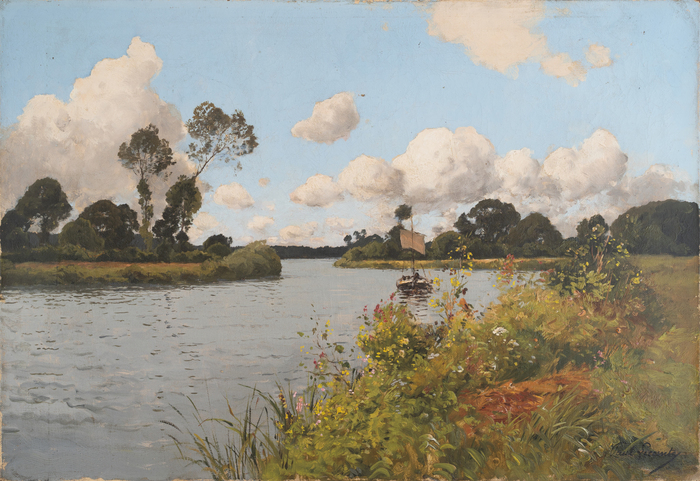"Let's face it: exhibitions on Impressionism have been far too abused in the Italian peninsula."
Vittorio Sgarbi's premise, presenting the exhibition organized in Rome to celebrate the 150th anniversary of Impressionism with an anthological exhibition, Impressionists - The dawn of modernity, is already a program.
This time it is not the "usual" exhibition of paintings, more or less known to the general public: many of the works on display, which all come from private Italian and French collections, were conceived as true experiments with new techniques, a reflection of that social and cultural humus that allowed Paris at the end of the 19th century to give life to that extraordinary artistic revolution that was Impressionism.
From 30 March to 28 July, at the Historical Infantry Museum, you can see a large gallery of paintings, drawings, watercolours, sculptures, ceramics and engravings by artists who contributed, by experimenting with different styles and techniques, to the originality of Impressionism and who participated in the eight Parisian exhibitions organized until 1886. With over 160 works by 66 artists, among which Degas, Manet, Renoir and the Italian De Nittis stand out, the anthology documents the origins and history of a new way of making art , influenced both by Barbizon's anti-academicism and plein air painting, as well as by the great innovations of the time: the advent of great industrialization, the birth of photography, cinema, electricity, the telephone and the first airplane flights.
And it focuses on heterogeneous experiments.
In particular, on a little-known aspect of impressionist research, dedicated to drawing, engraving and printing techniques, influenced, in fact, by the recent invention of photography.
They will therefore be exhibited alongside numerous oil paintings, preparatory sketches, studies and lithographs of works known to the general public, among these: La maison du doctor Gachet by Cézanne, L'homme à la pipe by Van Gogh, The portrait of Berthe Morisot and Manet's Bar aux Folies-Bergère, Renoir's La loge and, again, the famous ballerinas by Degas, of whom the exhibition also includes several bronze sculptures created based on the study of movement.
The exhibition itinerary is divided into three sections and also deals with the legacy of Impressionism, thus embracing a time span that goes from the beginning of the 19th century, with works by Ingres, Corot, Delacroix and Dorè, arriving at the Toulouse-Lautrec heirs , Permeke, Derain, Dufy and Vlaminck to end in 1968, with an etching by Pablo Picasso, a tribute to the artists Degas and Desboutin.
On the other hand, notes the critic Vittorio Sgarbi, director of the scientific committee composed of Gilles Chazal (former Director of the Musée du Petit Palais, Member of the Louvre School), Vincenzo Sanfo (Curator of international exhibitions, expert in Impressionism) and Maithé Vallès-Bled ( former Director of the Musée de Chartres and Musee Paul Valéry) who supported Navigare srl in the production of the exhibition, "the Impressionists are perpetually contemporary because they deal with our emotions, because they took reason away from painting, granting man the miracle to feel at the center of the world".
"It is an exhibition that restores the sense of an era to revive that unique and unrepeatable atmosphere, revisiting the extraordinary discoveries and the frenetic fervor that swept Paris at the end of the nineteenth century" explains Vincenzo Saffo, director of Mida and curator of exhibitions international.
The exhibition, he adds, "also places emphasis on a particular moment of research, perhaps less known, dedicated to drawing, engraving and in particular printing techniques, very popular at the time. Techniques which found on their way a new language, that of photography, which will suddenly make graphic art obsolete and will force a reflection on the use or otherwise of an apparently outdated medium".
Reproduction reserved © Copyright ANSA

